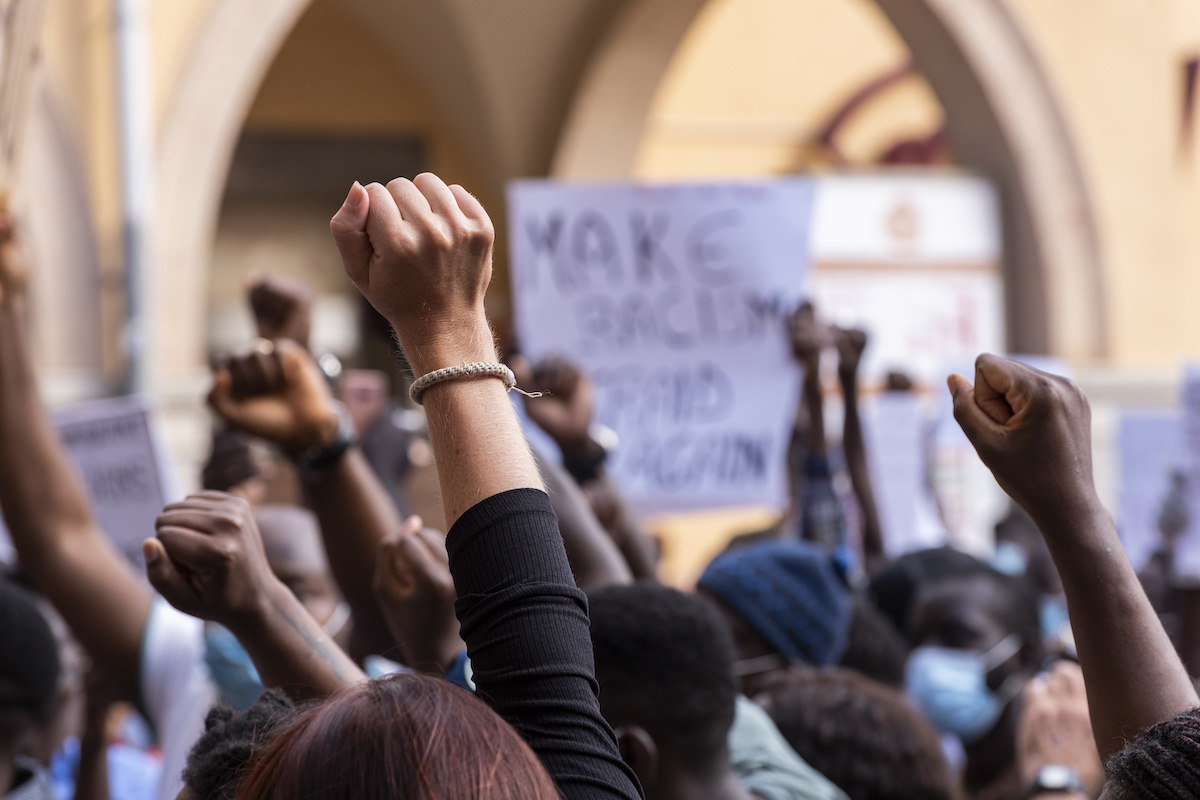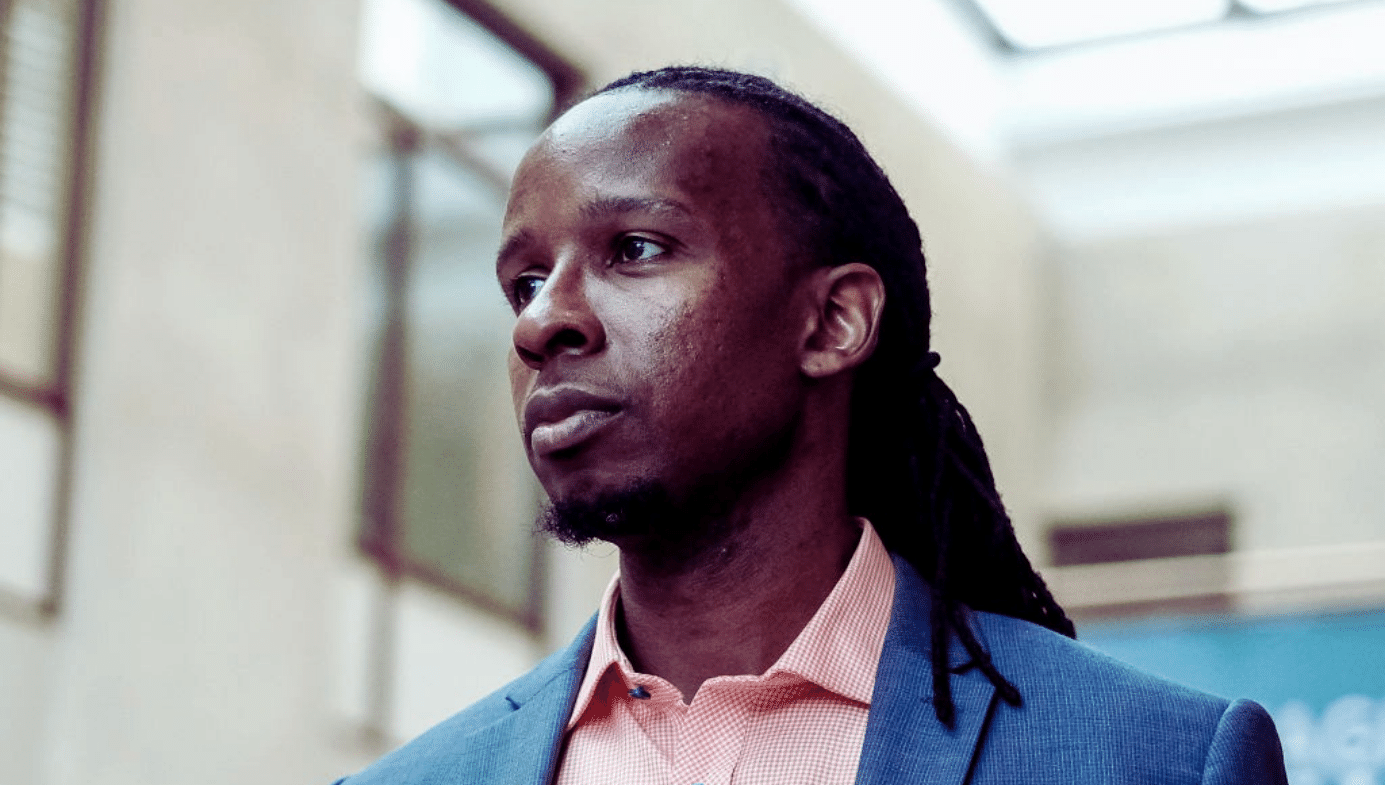Activism
Reinventing Racism—A Review
Beyond dismantling the ideas in White Fragility, Church leverages his background in economics to forward a more comprehensive framework around privilege.

A review of Reinventing Racism by Jonathan D. Church. Rowman & Littlefield, 250 pages (December 2020)
If the release of Robin DiAngelo’s 2018 book White Fragility: Why It’s So Hard for White People to Talk about Racism launched her into orbit, this past summer’s “racial reckoning” has made her a star. The book has been on the New York Times best-sellers list for a staggering 116 weeks in a row (and counting), while DiAngelo has been busy hosting workshops at universities and fortune 500 companies at perversely exorbitant fees. She gave an address to 184 Democratic members of Congress in the summer, and even made an appearance on the Tonight Show with Jimmy Fallon. It would be an understatement to say that her work has polarized opinion. In the introduction to White Fragility, Georgetown University professor and public intellectual Michael Eric Dyson called DiAngelo the “new racial sheriff in town.” On the other side of the debate, the linguist and writer John McWhorter has called the book a “racist tract” that treats black people like children in order to make “educated white readers feel better about themselves.” Missing from the debate has been a thoughtful and meticulous critique of DiAngelo’s ideas.
No longer. Economist and prolific writer Jonathan D. Church’s forthcoming book Reinventing Racism: Why “White Fragility” Is the Wrong Way to Think about Racial Inequality provides a definitive and fair-minded analysis of White Fragility, and a powerful bulwark against DiAngelo’s most poisonous claims. If DiAngelo “makes her prescriptions from beneath a blanket of Ativan,” as one reviewer put it, Church approaches them like a surgeon at the operating table. The writer Wesley Yang has pointed out that White Fragility may well be the perfect memetic weapon in the culture war, and DiAngelo’s clerical, slightly unnerving manner is the perfect vessel for its transmission. But Church, a brain cancer survivor who embraces a philosophy of stoicism, is unfazed, approaching White Fragility as a set of ideas to be explained and examined like any other piece of scholarship. Readers will walk away from this book knowing exactly what the concept of “white fragility” is about and what’s wrong with it. They will also walk away with a better understanding of racial inequality today.
Church first stumbled upon White Fragility after raising concerns about trends in social justice activism with friends and family, only to be met with raised eyebrows and mind-reading accusations. But rather than cutting his losses, his curiosity got the better of him, and he wrote numerous articles and essays on the problems with white fragility theory that laid the groundwork for this book. He has probably spent more time with DiAngelo’s work than anyone besides DiAngelo herself, and his diligence shows.
It might seem obvious that white people—or any people—would object to their skin being directly associated with the brutal legacy of historical oppression. But Church, characteristic of his openness and good faith, cautions against writing off DiAngelo entirely, insisting that we “should not simply discard what DiAngelo is trying to say. She has undoubtedly observed common forms of resistance and reaction among the white people she has attempted to educate on racism over the years.” This may be of some sociological significance. However, we “can acknowledge that these patterns of resistance and reaction can also function as a kind of Kafka trap.” By starting from the premise that all whites have inborn racial privilege and are woefully fragile as a consequence, resistance to the white fragility charge merely proves its validity. Denying the accusation is seen as evidence of one’s guilt.
Church lays out 10 interrelated issues with White Fragility in the opening segment and dedicates a chapter to each. The chapter on implicit bias training is probably the most devastating: It just doesn’t seem to work. This is a gigantic hole in the progressive framework on race issues that should immediately throw almost everything taken for granted in this worldview into doubt. The concept of structural or institutional racism is the central building block of modern antiracist activism. It rests on the belief that declining rates of overt racism since the 1960s are less significant than the more subtle, subterranean forms of bias that have come to be codified through implicit institutional practices that perpetuate racial disparities in outcome today. The problem is, as Church shows through quoting numerous studies, the test from which anti-bias training programs derive—the Implicit Association Test or IAT—is remarkably inconsistent and has no proven connection to real world bias.
This doesn’t mean the test is useless or that implicit racial biases don’t exist in society. It means that the methods used to test them and the programs used to mitigate them have not been proven effective. “If the science on implicit bias is, at best, inconclusive, then there is something amiss in Robin DiAngelo’s inflexible insistence that the implicit biases of white people are a central force in perpetuating systemic inequities in the distribution of societal resources—what many people call ‘institutional racism.’” What does the IAT actually measure? Probably ancient tribal impulses having nothing to do with acculturation into a racist society that can be easily suppressed or eclipsed from moment to moment.

The next chapter concerns the conceptual expansion of racism and the reification of “whiteness.” Basically, racism and racial inequality are interpreted by whiteness scholars and critical race theorists as the same phenomenon, reified through a complex yet invisible system of biases into which whites are socialized. This assumption, Church contends, commits to the reification fallacy—treating an abstraction as though it were a concrete thing:
We see Whiteness as a kind of serpentine ghost always lurking around, whispering in the ears of white people, telling them to think, talk, and act in ways that reinforce a prevailing hierarchy, without white people realizing it. If we are made to believe in the nefarious ghost of Whiteness, we make ourselves susceptible to confirmation bias. That is, we start to see everything as examples of Whiteness in action. We believe what we want to believe. We see what we want to see.
The next few chapters concern White Fragility’s allergy to the scientific method, qualitative and quantitative data analysis, hypothesis testing, falsifiability, and logic itself. That DiAngelo’s work is light on statistics and facts should not come as a surprise given her hostility to the notion of objective truth. Some of this comes straight out of the playbook of critical theory and postmodernism, schools of thought characterized by a skepticism of truth claims that act as a mask for power. But DiAngelo naturally takes this a step further. The original critical theorists were distrustful of objective truth claims and the scientific method only insofar as they stood in the way of discerning truth. By confusing objectivity with neutrality, Church contends, DiAngelo tosses the baby out with the bathwater.
DiAngelo’s advocates and defenders contend that whites unconsciously hide behind individualism in order to conceal their unstated allegiance to white identity. But, as studies cited by Church reveal, whites are generally aware of their group identity and nonwhite groups are no less likely to value individualism. More concerning than the factual error is its practical effects: Studies have found that teaching people about white privilege makes them less sympathetic to the plight of poor whites.
As Church shows, DiAngelo’s tendency to adapt facts to narrative rather than the other way round is a feature not a bug. An innocuous Jeopardy! episode in which the African American History category was broached last by the contestants is seen by DiAngelo as unambiguous evidence that white people don’t understand their racial history and don’t want to. How can she be sure of this? Well, we don’t know. Typical of her style, she just sort of asserts it and then moves on. But there could be dozens of reasons why the contestants left that section last (including not wanting to seem politically incorrect by getting a question wrong about blacks). In any case, the contestants got three out of five questions right! To the White Fragility hammer, everything is a nail. Ambiguity and human complexity don’t factor in.
Beyond dismantling the ideas in White Fragility, Church leverages his background in economics to forward a more comprehensive framework around privilege. It should go without saying that individuals and groups differ in their relative advantages and disadvantages and some of these differences are unearned or unfair. But social justice activists make the mistake of demonizing privilege per se. The question is how to differentiate good privileges that everyone should have from bad privileges that come at the expense of others. Church unpacks this important and difficult distinction at length.
Reinventing Racism is heavy on data analysis and probably isn’t meant for your average lay reader without at least some prior knowledge of the subject. And although Church untangles the logical issues with White Fragility with laudable precision, the question of why people buy into this worldview is hardly explained. Be that as it may, by carefully slicing White Fragility into its constituent parts and specifying the problems with each, step-by-step, Church provides a valuable service—teachers, journalists, parents, and concerned citizens alike now have a toolkit with which to counter the promulgation of DiAngelo’s pernicious ideas. Taken together, the theory’s logical circularity, its rejection of science, its religiosity, racial atavism, intellectual arrogance, bullying tactics, smug certainty, unapologetic myopia, and reinvention of racism from an identifiable action or belief to an anthropomorphic structural force that is nowhere and everywhere at once, betrays the DiAngelo doctrine for what it is: a house of cards. That White Fragility has become so popular in spite of its flaws should elicit introspection regarding where we are as a culture and where we are going.






